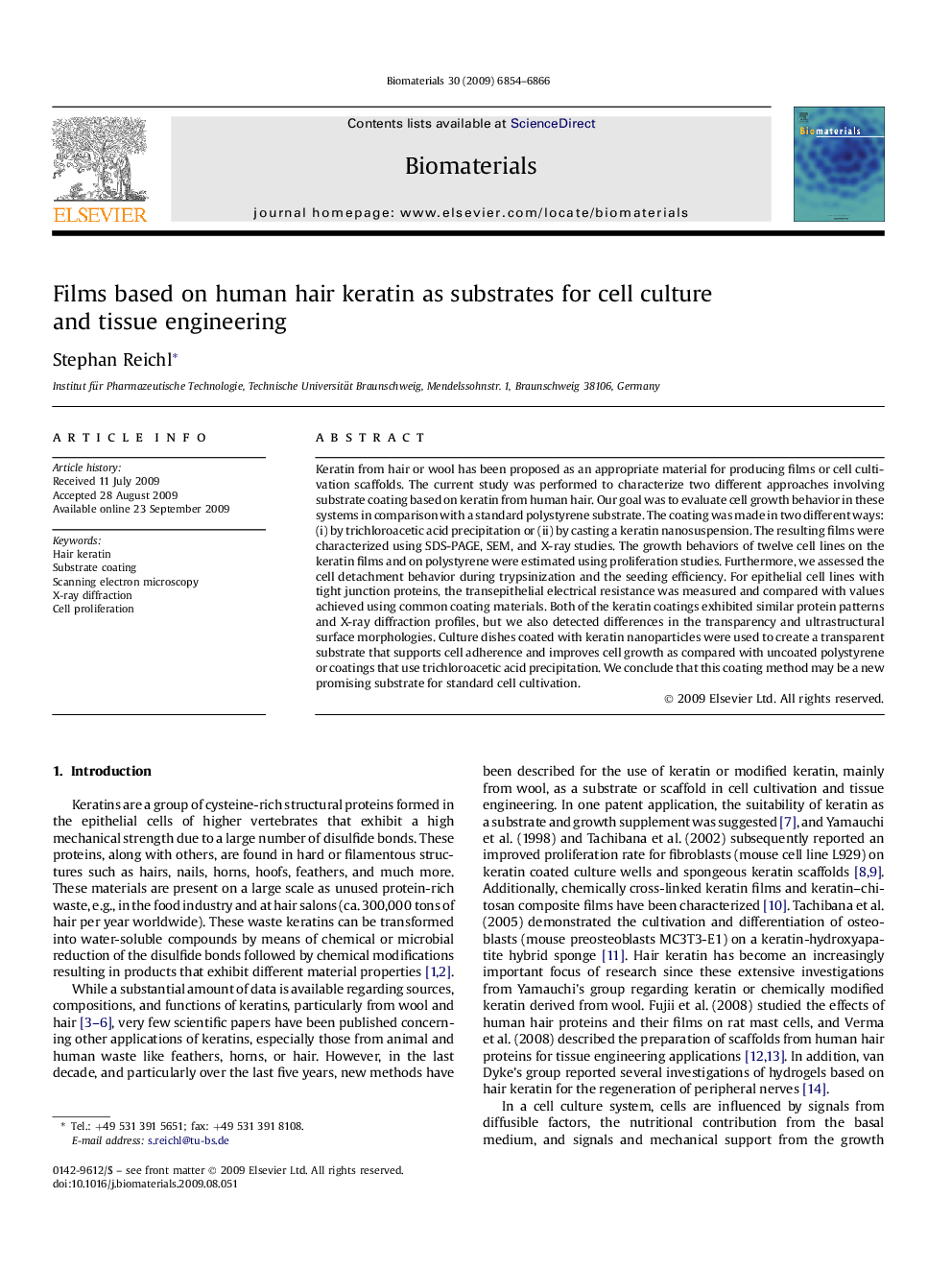| Article ID | Journal | Published Year | Pages | File Type |
|---|---|---|---|---|
| 8768 | Biomaterials | 2009 | 13 Pages |
Keratin from hair or wool has been proposed as an appropriate material for producing films or cell cultivation scaffolds. The current study was performed to characterize two different approaches involving substrate coating based on keratin from human hair. Our goal was to evaluate cell growth behavior in these systems in comparison with a standard polystyrene substrate. The coating was made in two different ways: (i) by trichloroacetic acid precipitation or (ii) by casting a keratin nanosuspension. The resulting films were characterized using SDS-PAGE, SEM, and X-ray studies. The growth behaviors of twelve cell lines on the keratin films and on polystyrene were estimated using proliferation studies. Furthermore, we assessed the cell detachment behavior during trypsinization and the seeding efficiency. For epithelial cell lines with tight junction proteins, the transepithelial electrical resistance was measured and compared with values achieved using common coating materials. Both of the keratin coatings exhibited similar protein patterns and X-ray diffraction profiles, but we also detected differences in the transparency and ultrastructural surface morphologies. Culture dishes coated with keratin nanoparticles were used to create a transparent substrate that supports cell adherence and improves cell growth as compared with uncoated polystyrene or coatings that use trichloroacetic acid precipitation. We conclude that this coating method may be a new promising substrate for standard cell cultivation.
